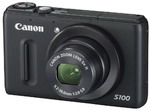Monday, February 13, 2006
Sometimes Deleting Can Be Good: The Concept of Culling in Digital Photography
Posted by Jason Dunn in "THOUGHT" @ 09:00 AM
Answer me this my fellow digital photographers: when you come back from shooting a bunch of photos with your camera, do you keep them all? Or do you delete some of them? I'm not talking about the blurry ones, or the ones that are too dark to be rescued. I'm asking if you delete photos that turned out well. Does the thought of that scare you? Do you believe that the real benefit of digital photography is the ability to shoot as many pictures as you want of the same thing, and keep them all? Then this article is for you.
I love digital photography. Prior to going digital, I wasn't very interested in photography. I was enchanted by the idea of photography; capturing memories and images, but I was less enthused about the costs, and the limitations of never knowing if that shot you took actually turned out until after you developed it. I became more interested in photography in college, after having purchased a 35mm Canon Rebel for a photography class, and enjoying the feel of a camera really meant for taking pictures. As I moved to digital after getting a Kodak DC265 in 1999, I realized that the rules had definitely changed. It's taken me a few years to develop a system of working with digital images that works for me, and I hope to share part of that system with you today.
The Importance of Culling
I think you should get in the habit of deleting "good" photos, and here's why: I believe that deleting/culling photos is an important part of learning how to be a better photographer. The word culling has its genesis in ranching, but the idea is a good one: separating the weak from the strong, for the purpose of making the remainder even stronger. It has powerful implications for digital photography.
If you snap five pictures of a scene, odds are that only one of those images captures the moment better than all the others. Often it's hard to make the judgement if they're really close - I often have to do A/B comparisons of photos several times before I pick the one that has the most impact. Looking at your images and comparing them helps you learn what makes a photo great. Sometimes it's the small details of a photo that make it better, while other times one photo is just technically better than another one - better exposure, a better angle, or better composition. There are exceptions to this rule of course - often times, especially with photos of human/animal subjects shot in rapid succession, you can capture spontaneous moments and the entire series of photos tells the story.
It's my belief that keeping five nearly identical photos foster a pack-rat mentality that holds a photographer back from improving. If you keep all your images, you never have to think about why one is better than the other. That means you never have to look critically at your own photography and learn what types of photos you should be striving for when you bring that camera up to your eye and press the shutter release.
Back in my analog days of photography, I went on a vacation to Arizona. Never having been there, I was enchanted by the vivid colours - the red rocks, the yellow desert, the vivid sunsets. During the week I was there, I shot around 12 rolls of 36 exposure film. Returning home, I got it all developed, and requested doubles for good measure. It was a hefty developing bill! When I started looking through my images, I was stunned to realize that I had taken so many images of the same thing. After ten photos of cacti and twenty photos of red rocks, they all start to look the same. I was disappointed in myself for not only trying for more variety in my photography, but more so for not realizing what a waste of money and film it was to take so many pictures of the same thing. Now that we're in the digital world the waste isn't in money and film, it's in hard drive space, and collections of memories that are bloated by too many photos. Having a collection of 20,000 digital photos isn't a good thing if 15,000 of them are near-duplicates of the other 5,000.












